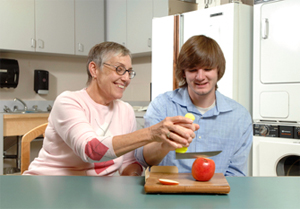What is Occupational Therapy?
 Occupational Therapy is the service, which provides practical support to enable people to facilitate recovery and overcome any obstacles that prevent them from doing the activities (occupation) that matters to them. The primary goal of occupational therapy is to enable people to participate in the activities of everyday life.
Occupational Therapy is the service, which provides practical support to enable people to facilitate recovery and overcome any obstacles that prevent them from doing the activities (occupation) that matters to them. The primary goal of occupational therapy is to enable people to participate in the activities of everyday life.
Our Occupational Therapist can identify strengths and difficulties you may have in everyday life. All Occupational therapists have one overruling goal to help patients to perform daily living and working tasks so they can lead independent and satisfying life. They assists patients with large number of activities that are essential to a daily life. They work with people of all ages and can look at all aspects of daily life, from the home to the school or a workplace.
Common Therapy Provision
Children:
Occupational therapists support children to engage to their full potential within their school and home environments.
We can assist in areas including:

- Fine-motor skills i.e. tasks that involve movements of the small muscles of the hands (eg/ handwriting, tying shoelaces)
- School tasks (e.g. writing/drawing/colouring/cutting)
- Following classroom routines (e.g. mat time, staying focused in class and organising materials).
- Visual perception i.e. being able to interpret and make sense of visual information
- Sensory processing i.e. the way the brain takes in, organises and processes sensory information
- Play
- Daily living skills (e.g. dressing, eating/feeding, toileting, sleeping, independence)
- Behaviour
- Attention and concentration
- Organisational and problem solving skills
Adults:
Occupational therapists help adults to achieve their goals relating to their performance and independence in day to day activities
We can help people in areas including:

- Neurological/ cognitive rehabilitation
- Optimising engagement in activities of daily living (eg. eating, showering, dressing, grooming)
- Hand and upper limb function
- Pain management
- Seating and pressure care
- Falls prevention
- Provision of equipment, assistive devices and independence aids
- Engagement in recreation/leisure activities and community access
- Home/environment modifications




